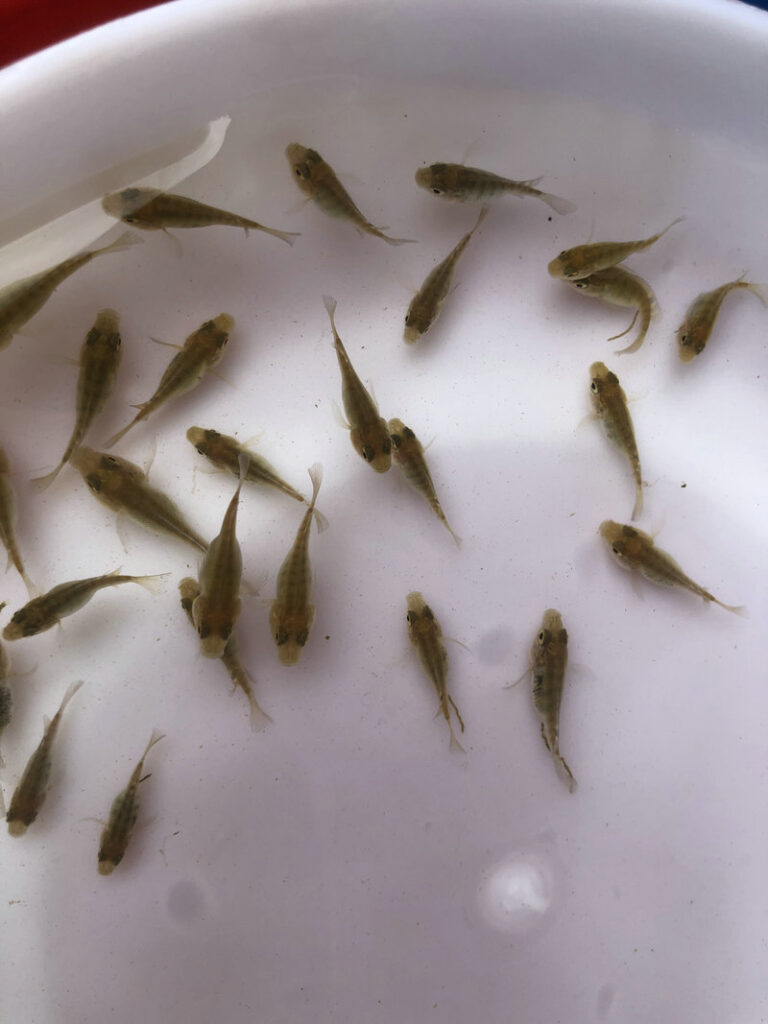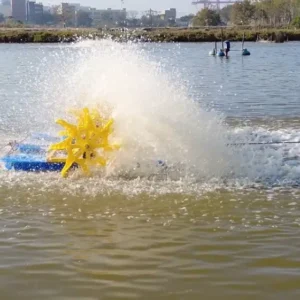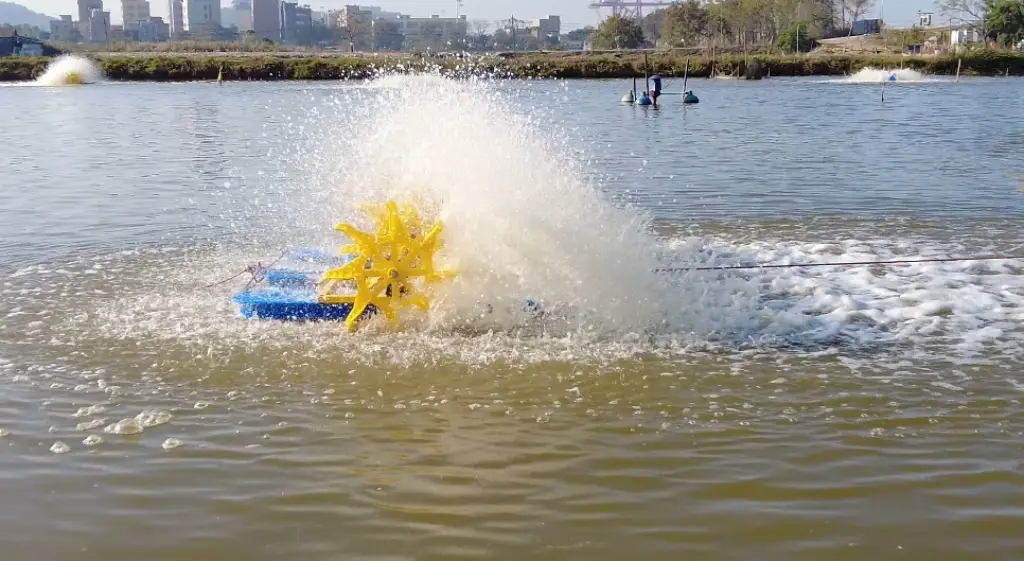Tilapia is favored by farmers due to its strong adaptability, rapid growth, and delicious meat. The following is a detailed guide for cultivating tilapia in fish ponds, hoping to help fisherman friends start their cultivation smoothly.
I. Preparation of Fish Ponds
Site Selection

Choose a place with abundant water sources, good and unpolluted water quality, and convenient water inlet and outlet to build a fish pond. Ideally, it should be close to rivers, lakes, or have a stable groundwater supply to ensure that there is no water shortage even in dry seasons. Meanwhile, the surrounding environment should be quiet, and the transportation should be convenient for the transportation of feed, fry, and adult fish.
Specifications of Fish Ponds
The area of the fish pond is preferably 3 – 10 mu, and the water depth is controlled at 1.5 – 2.5 meters. If the area is too large, it is not conducive to daily management; if it is too small, the stability of the water body is poor. The bottom of the pond should be flat with a certain slope, which is convenient for sewage discharge and fishing.
Pond Cleaning and Disinfection
15 – 20 days before stocking fry, drain the pond water, remove excessive sludge, and then disinfect with quicklime or bleaching powder. Generally, the dosage of quicklime is 75 – 100 kg per mu. Dissolve it in water and spray it evenly over the whole pond. This can effectively kill harmful organisms such as germs, parasites, and wild fish, and improve the bottom quality. The dosage of bleaching powder is 10 – 15 kg per mu. When using it, make sure it is fully dissolved and sprayed evenly.
II. Stocking of Fry
Selection of Fry
Preferentially select high-quality fry that are physically strong, uniform in size, active in swimming, and have no surface damage. The size of the fry is preferably 3 – 5 cm. Fry of this size have relatively strong adaptability and a high survival rate. It is recommended to purchase from regular fry farms and ask them to provide quarantine certificates to ensure there is no epidemic risk.
Stocking Density
The stocking density should be reasonably determined according to the conditions of the fish pond, your own cultivation techniques, and the expected size at harvest. Generally, for a fish pond with a water depth of 1.5 – 2 meters, it is appropriate to stock 1500 – 2000 fry per mu. If you plan to cultivate large-sized commercial fish, the stocking density can be appropriately reduced; if you aim to raise them to medium-sized ones for market in a short time, the density can be appropriately increased.
Domestication of Fry
The newly stocked fry need to be fed and domesticated to help them develop good habits of feeding at fixed points and times. Select a fixed feeding point by the pond side. When feeding, tap a bucket or something to make a fixed sound to attract the fry. In the initial stage, adopt a small amount and multiple times feeding strategy, feeding 4 – 6 times a day. As the fry grow, gradually reduce the feeding times and increase the feeding amount.
III. Feed Management

Feed Selection
Tilapia is an omnivorous fish and can ingest a variety of feeds. However, to ensure its rapid growth and good quality, it is recommended to choose high-quality compound feed, and the crude protein content of the feed should be controlled at 28% – 32%. According to different growth stages of tilapia, select feeds with corresponding particle sizes. For the juvenile stage, choose feeds with a particle size of 0.5 – 2 mm, and for the adult stage, choose feeds with a particle size of 2 – 4 mm.
Feeding Method
Strictly follow the “Four Fixes” principle, that is, fixed time, fixed point, fixed quality, and fixed quantity. Feed 2 – 3 times a day, at 9 – 10 am and 4 – 5 pm respectively. During the high-temperature period in summer, an extra feeding can be appropriately added at 7 – 8 pm. The feeding amount should be such that the fish can finish eating within 30 – 40 minutes. At the same time, adjust flexibly according to the weather, water temperature, and the feeding situation of the fish. Reduce the feeding amount on rainy days and when the water temperature is low.
IV. Daily Management
Water Quality Regulation
Maintaining fresh water quality is the key to the successful cultivation of tilapia. Change the water regularly. In spring and autumn, change 1/4 – 1/3 of the water every week. During the high-temperature period in summer, change 1/5 – 1/4 of the water every day. When changing the water, pay special attention that the temperature difference between the new water and the original pond water should not exceed 3 °C. Regularly use microbial agents to regulate water quality, such as photosynthetic bacteria and Bacillus, which can decompose residual baits and feces in the water, reduce the content of harmful substances such as ammonia nitrogen and nitrite, and maintain the ecological balance of the water body.
Pond Inspection
Inspect the pond every morning and evening, closely observe the activities and feeding conditions of the fish, and carefully check whether there are diseases and whether there are abnormal changes in water quality. Once dead fish are found, they should be removed immediately and the cause of death should be identified. If abnormal phenomena such as fish floating on the water surface or swimming close to the edge are detected, immediate measures must be taken.
Use of Aerators
Aerators play a crucial role in tilapia cultivation. They can not only increase the dissolved oxygen in the water body but also promote the convection between the upper and lower layers of the water body and improve the water quality. Turn on the aerator for 1 – 2 hours at noon on sunny days to send the water with abundant dissolved oxygen in the upper layer to the lower layer, improve the anoxic condition of the bottom layer, and reduce the risk of anoxic floating heads at night. On rainy and muggy days, turn on the aerator in advance and appropriately extend the running time. It can even be turned on from midnight or even in the evening and run until dawn to ensure sufficient dissolved oxygen in the water and prevent tilapia from suffocating and dying due to lack of oxygen. In the middle and later stages of cultivation, as the fish grow and the density increases, the running time and frequency of the aerator should also be increased correspondingly. Reasonable use of aerators can significantly improve the survival rate and growth rate of tilapia.

V. Disease Prevention and Treatment
Prevention First
Always adhere to the principle of prevention first and combination of prevention and treatment. Regularly disinfect the fish pond and aquaculture tools. Use disinfectants such as chlorine dioxide to spray the whole pond every half month. Regularly add additives such as multivitamins and immunopolysaccharides to the feed to enhance the immunity of the fish and improve their disease resistance.
Common Diseases and Treatments
Common diseases of tilapia include streptococcosis, bacterial gill rot, and saprolegniasis. Once a disease is diagnosed, it is necessary to diagnose it quickly and accurately and prescribe the right medicine. For example, for streptococcosis, antibiotics such as florfenicol and doxycycline can be mixed with the feed for feeding, and at the same time, disinfectant drugs can be sprayed over the whole pond. For bacterial gill rot, bleaching powder or sodium dichloroisocyanurate can be sprayed over the whole pond, combined with feeding drugs such as enrofloxacin. For saprolegniasis, a mixture of table salt and baking soda can be sprayed over the whole pond at the initial stage of the disease, and at the same time, the water quality should be improved to prevent the disease from worsening.
As long as you carefully manage according to the above steps and pay attention to the details of each link, fisherman friends can cultivate healthy and high-yield tilapia in the fish pond and obtain considerable economic benefits.


